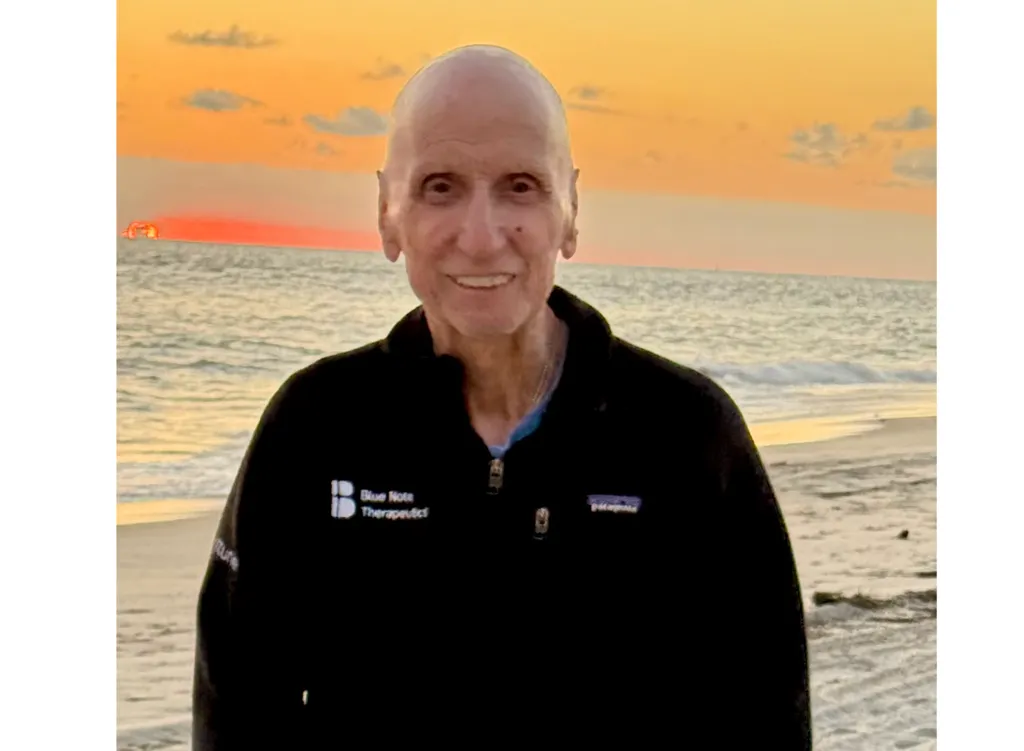Who Gets AML? Exploring the Risk Factors for Acute Myeloid Leukemia

Acute myeloid leukemia (AML) can affect anyone, however, certain risk factors may contribute to the development of AML. The precise way in which AML develops is not fully understood. It is generally accepted that genetic changes in healthy cells lead to the growth of abnormal cells in a process called leukemogenesis. These mutations can be hereditary (germline) or acquired during your lifetime (somatic), often due to external factors or aging.
Can other disorders increase the risk of AML?
The most common risk factor for AML is other hematological disorders, such as myelodysplastic syndromes (MDS), myeloproliferative neoplasms (MPN), or aplastic anemia. These disorders may progress to AML in certain cases. This type of AML is referred to as secondary AML and accounts for roughly 19% of all cases. Additionally, genetic disorders such as Fanconi anemia, Li-Fraumeni syndrome, and Down syndrome are associated with an increased risk of developing AML.
Are age and sex associated with AML?
AML is slightly more common in males than females and generally affects older patients. The median age at diagnosis is around 68 years.
Can prior therapy increase the risk of AML?
Previous treatment with chemotherapy and/or radiation therapy can increase the risk of developing AML. This is referred to as therapy-related AML, a type of secondary AML that accounts for around 8% of all cases. This type of AML is particularly associated with prior treatment with:
- Alkylating agents (bendamustine or carboplatin)
- Topoisomerase II inhibitors (etoposide or teniposide)
- Ionizing radiation
- Certain antimetabolites and anti-tubulin agents (azacitidine, cytarabine, or paclitaxel)
Are there any environmental or lifestyle risk factors for AML?
Current and previous smokers have a higher likelihood of developing AML when compared with non-smokers. A high body mass index is also associated with a higher chance of developing AML. Exposure to certain chemicals and/or occupational hazards are known or suspected risk factors for AML, including exposure to:
- Benzene
- Formaldehyde
- Ionizing radiation
- Electric and magnetic fields
- Pesticides and fertilizers
- Infectious agents/viruses
- Alkylating agents
Certain occupations may also be associated with AML due to exposure to occupational hazards, for example, firefighters may have an increased risk of AML from exposure to carcinogens. A study analyzing data from the California Cancer Registry identified several industries and occupations that may also have an increased risk of developing AML, such as:
- Construction laborers
- Electricians
- Carpet installers
- Animal slaughtering and processing workers
- Farmworkers
- Fishers and related fishing occupations
- Nurses and home aides
- Crop production workers
- Brick masons
- Janitors
Can stress cause AML?
Chronic stress can lead to a variety of health problems, but whether it can cause cancer is unclear. However, for patients with cancer, chronic stress may cause the cancer to get worse. Stress management techniques can help to reduce stress in patients with AML, and improve quality of life.
Key takeaways
- Other hematologic or genetic disorders can increase your likelihood of developing AML
- Prior exposure to chemotherapy or radiation therapy are risk factors for AML
- Environmental and lifestyle factors may increase the risk of AML
To learn more about AML, its diagnosis, and treatment, visit HealthTree University for AML:
Sources:
- The global burden and attributable risk factor analysis of acute myeloid leukemia in 195 countries and territories from 1990 to 2017: estimates based on the global burden of disease study 2017.
- Acute Myeloid Leukemia: An Ever-Changing Disease.
- Mortality in a cohort of US firefighters from San Francisco, Chicago and Philadelphia: an update.
- Acute myeloid leukemia risk by industry and occupation.
- Stress and Cancer.
Acute myeloid leukemia (AML) can affect anyone, however, certain risk factors may contribute to the development of AML. The precise way in which AML develops is not fully understood. It is generally accepted that genetic changes in healthy cells lead to the growth of abnormal cells in a process called leukemogenesis. These mutations can be hereditary (germline) or acquired during your lifetime (somatic), often due to external factors or aging.
Can other disorders increase the risk of AML?
The most common risk factor for AML is other hematological disorders, such as myelodysplastic syndromes (MDS), myeloproliferative neoplasms (MPN), or aplastic anemia. These disorders may progress to AML in certain cases. This type of AML is referred to as secondary AML and accounts for roughly 19% of all cases. Additionally, genetic disorders such as Fanconi anemia, Li-Fraumeni syndrome, and Down syndrome are associated with an increased risk of developing AML.
Are age and sex associated with AML?
AML is slightly more common in males than females and generally affects older patients. The median age at diagnosis is around 68 years.
Can prior therapy increase the risk of AML?
Previous treatment with chemotherapy and/or radiation therapy can increase the risk of developing AML. This is referred to as therapy-related AML, a type of secondary AML that accounts for around 8% of all cases. This type of AML is particularly associated with prior treatment with:
- Alkylating agents (bendamustine or carboplatin)
- Topoisomerase II inhibitors (etoposide or teniposide)
- Ionizing radiation
- Certain antimetabolites and anti-tubulin agents (azacitidine, cytarabine, or paclitaxel)
Are there any environmental or lifestyle risk factors for AML?
Current and previous smokers have a higher likelihood of developing AML when compared with non-smokers. A high body mass index is also associated with a higher chance of developing AML. Exposure to certain chemicals and/or occupational hazards are known or suspected risk factors for AML, including exposure to:
- Benzene
- Formaldehyde
- Ionizing radiation
- Electric and magnetic fields
- Pesticides and fertilizers
- Infectious agents/viruses
- Alkylating agents
Certain occupations may also be associated with AML due to exposure to occupational hazards, for example, firefighters may have an increased risk of AML from exposure to carcinogens. A study analyzing data from the California Cancer Registry identified several industries and occupations that may also have an increased risk of developing AML, such as:
- Construction laborers
- Electricians
- Carpet installers
- Animal slaughtering and processing workers
- Farmworkers
- Fishers and related fishing occupations
- Nurses and home aides
- Crop production workers
- Brick masons
- Janitors
Can stress cause AML?
Chronic stress can lead to a variety of health problems, but whether it can cause cancer is unclear. However, for patients with cancer, chronic stress may cause the cancer to get worse. Stress management techniques can help to reduce stress in patients with AML, and improve quality of life.
Key takeaways
- Other hematologic or genetic disorders can increase your likelihood of developing AML
- Prior exposure to chemotherapy or radiation therapy are risk factors for AML
- Environmental and lifestyle factors may increase the risk of AML
To learn more about AML, its diagnosis, and treatment, visit HealthTree University for AML:
Sources:
- The global burden and attributable risk factor analysis of acute myeloid leukemia in 195 countries and territories from 1990 to 2017: estimates based on the global burden of disease study 2017.
- Acute Myeloid Leukemia: An Ever-Changing Disease.
- Mortality in a cohort of US firefighters from San Francisco, Chicago and Philadelphia: an update.
- Acute myeloid leukemia risk by industry and occupation.
- Stress and Cancer.

about the author
Dylan Barrett
Dylan is a freelance medical writer based in Cork, Ireland. He previously worked in independent medical education while living in London and is now collaborating with HealthTree to develop resources for blood cancer patients. His background is in genetics, and he has a passion for innovative scientific research. In his spare time, he enjoys sports, traveling, and spending time with his family and friends.
More on Core Education
Trending Articles

Get the Latest Acute Myeloid Leukemia Updates, Delivered to You.
By subscribing to the HealthTree newsletter, you'll receive the latest research, treatment updates, and expert insights to help you navigate your health.










